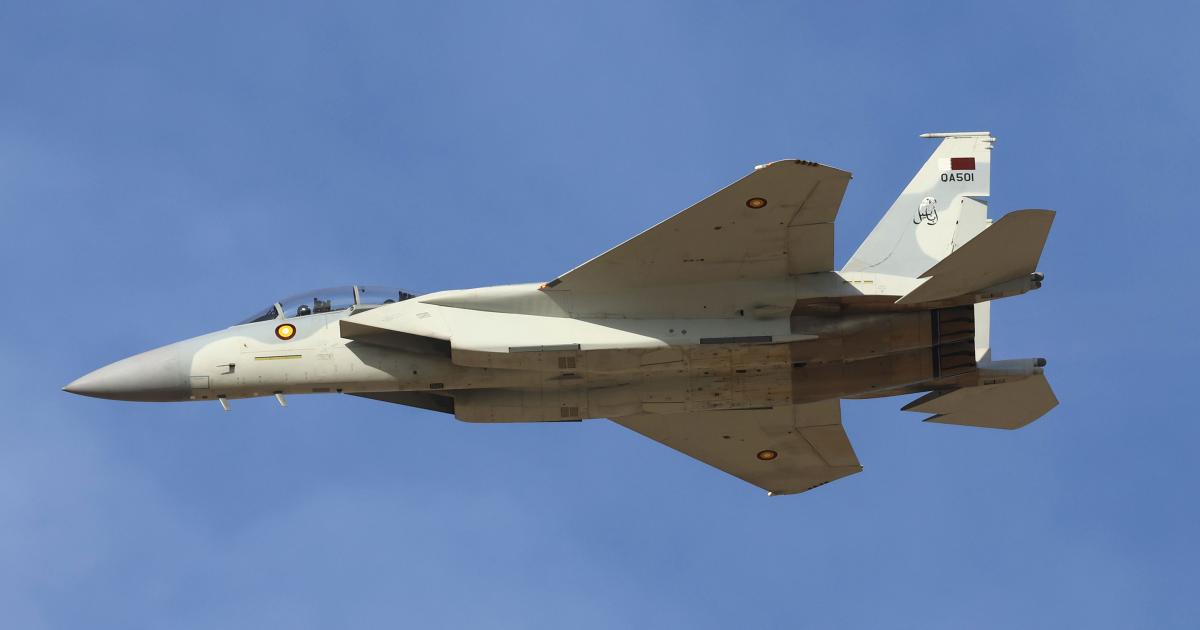USAF F-15EX Ignites Renewed Interest in the Boeing Fighter

Boeing will soon fly the third F-15EX Eagle II development aircraft for the U.S. Air Force, having rolled out the fighter from its St. Louis factory in August. That event occurred more than two years since the first two F-15EXs went to the U.S. Air Force in early 2021 to begin testing.
While Boeing attributed some of the delay to supply chain issues, the urgent nature of the USAF’s program was the main reason. The initial aircraft—EX-1 and EX-2—were Advanced Eagle airframes already in production for Qatar but reassigned to the U.S. Air Force to get testing underway at the earliest possible date.
In the intervening period, Boeing implemented a major update in its manufacturing process, based on a digital redesign of the F-15’s forward fuselage. The third aircraft—EX-3— is the first to emerge from the line with the new design, which has become the standard for all future production. The redesign allows for more efficient production, including the increased use of robotics.
Due to the wealth of experience gained with earlier versions of the F-15, the EX has become the first U.S. Air Force aircraft to enter concurrent developmental and operational test and evaluation (DT&E/OT&E), and the first two aircraft have now completed Initial OT&E Phase 1. The next four aircraft are also to be allocated to trials duties, while EX-3/4 joins the fleet this year and the first two operational aircraft (EX-7/8) get handed over to the Air National Guard at an unspecified time.
Boeing is under contract for Lots 1-4, with Lot 5 imminent. The slated Air Force buy involves 104 aircraft in six Lots, but that is not firm. The current production rate equates to 1.5 aircraft per month, but plans call for that to rise to two per month by 2025, with production of the 104 aircraft due for completion in 2028.
The F-15EX is based closely on the Advanced Eagle that Saudi Arabia (F-15SA) and Qatar (F-15QA) both procured. Those models introduced iterative enhancements, such as General Electric F110-GE-129 engines, ALQ-82(V)1 AESA radar, 10- by 19-inch large-area display in the cockpit, and the ability to carry up to 12 air-to-air missiles or 15 tonnes of ordnance.
A digital fly-by-wire flight control system alleviates the previous need to avoid asymmetric loads and cross-control maneuvers, while restricting normal airframe load to 9Gs and speed to Mach 2.5, although the airframe can exceed both in extreme situations. The aircraft’s power and maneuverability are being exhibited at the Dubai Airshow in the spectacular flying display flown by a Boeing test pilot in a Qatari F-15QA.
Another key element of the F-15EX is the BAE Systems ALQ-250 Eagle Passive Active Warning Survivability System (EPAWSS), which represents a major enhancement in the ability of the system to adapt rapidly to emerging threats. EPAWSS has reached the final stages of development, and an export-optimized version is also being formulated.
Boeing has received considerable interest in the F-15EX and its new systems, including from all current legacy Eagle customers and covering both new-build aircraft or using elements of the EX/Advanced Eagle for deep modernization programs such as that underway in Japan. Israel has voiced intentions to buy new F-15EXs, but talks remain on hold due to the Gaza crisis.
Naturally, the F-15EX also has sparked a new round of interest in the Eagle from several other nations. In August, Indonesia signed a memorandum of understanding with Boeing to pursue a requirement of 24 aircraft, while Poland has recently initiated discussions concerning the potential acquisition of 32.




Ingen kommentarer:
Legg inn en kommentar
Merk: Bare medlemmer av denne bloggen kan legge inn en kommentar.